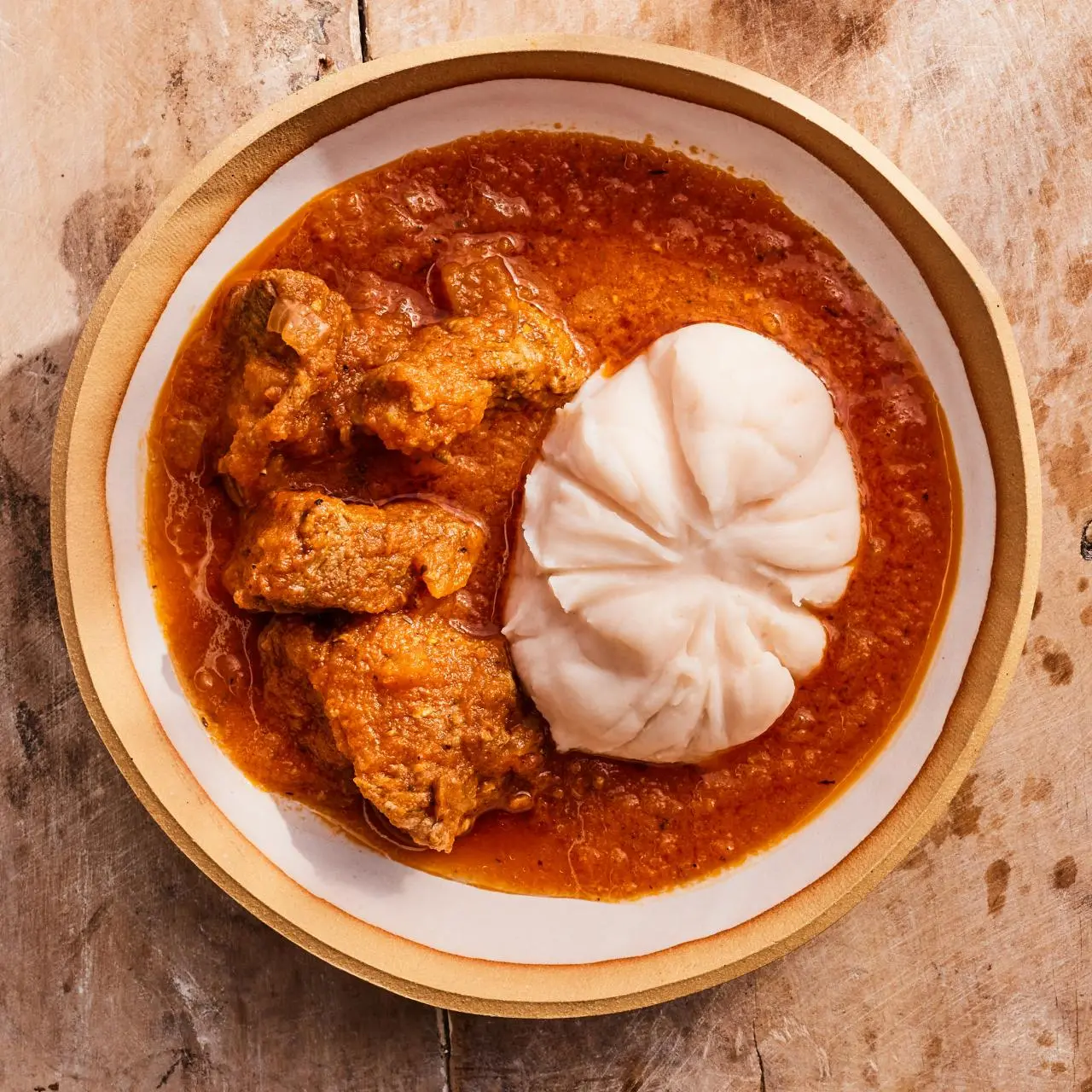- Your cart is empty
- Continue Shopping

Stovetop Fufu Recipe
Fufu is a beloved dish in many West African countries, known for its smooth and stretchy texture. It’s typically served as a side with soups, stews, and sauces. While traditional fufu is made by pounding starchy vegetables like yam, plantain, or cassava, this stovetop version offers a quicker and easier way to prepare it, using simple ingredients that can be found in most kitchens.
Here’s a step-by-step recipe for making stovetop fufu!
Ingredients:
- 2 cups fufu flour (cassava flour or yam flour)
- 4 cups water
- A pinch of salt (optional, to taste)
Instructions:
- Boil the Water:
In a medium-sized pot, bring 4 cups of water to a boil over medium heat. Make sure the pot is large enough to avoid spilling as the mixture thickens. - Mix the Fufu Flour:
In a separate bowl, gradually add 2 cups of fufu flour into 1 cup of cold water. Stir it continuously to form a smooth, lump-free paste. This helps prevent lumps when you add it to the boiling water. - Add the Fufu Paste to Boiling Water:
Once the water in the pot is boiling, reduce the heat to medium-low. Slowly add the fufu paste into the pot, stirring continuously with a wooden spoon or spatula. Stir in a circular motion to avoid lumps. - Cook and Stir:
Continue stirring the fufu mixture for about 5-10 minutes. The fufu will begin to thicken and become stretchy. If it gets too thick to stir, add a bit more water (a tablespoon at a time) to adjust the consistency. Keep stirring until it has a smooth, elastic texture. - Shape the Fufu:
Once the fufu is fully cooked and has reached the desired consistency, remove the pot from heat. Wet your hands (to avoid sticking) and shape the fufu into small balls or serve it directly in the pot. The fufu should be smooth, stretchy, and slightly firm. - Serve:
Fufu is best served hot with your favorite African soup, stew, or sauce. Popular pairings include dishes like Egusi soup, Light soup, or Palm nut soup. Simply dip the fufu into the soup and enjoy!
Tips:
- Consistency: The thickness of fufu can be adjusted by adding more water for a softer texture or cooking it longer for a firmer consistency.
- Alternative Flour: If you can’t find fufu flour, you can use instant pounded yam flour, cassava flour, or even plantain flour for a different twist.
Conclusion:
This stovetop fufu recipe is a quick and easy way to enjoy a traditional African dish without the pounding. With just a few ingredients and a bit of stirring, you can have a smooth, stretchy fufu ready to pair with your favorite soup. Enjoy your homemade fufu in no time!
